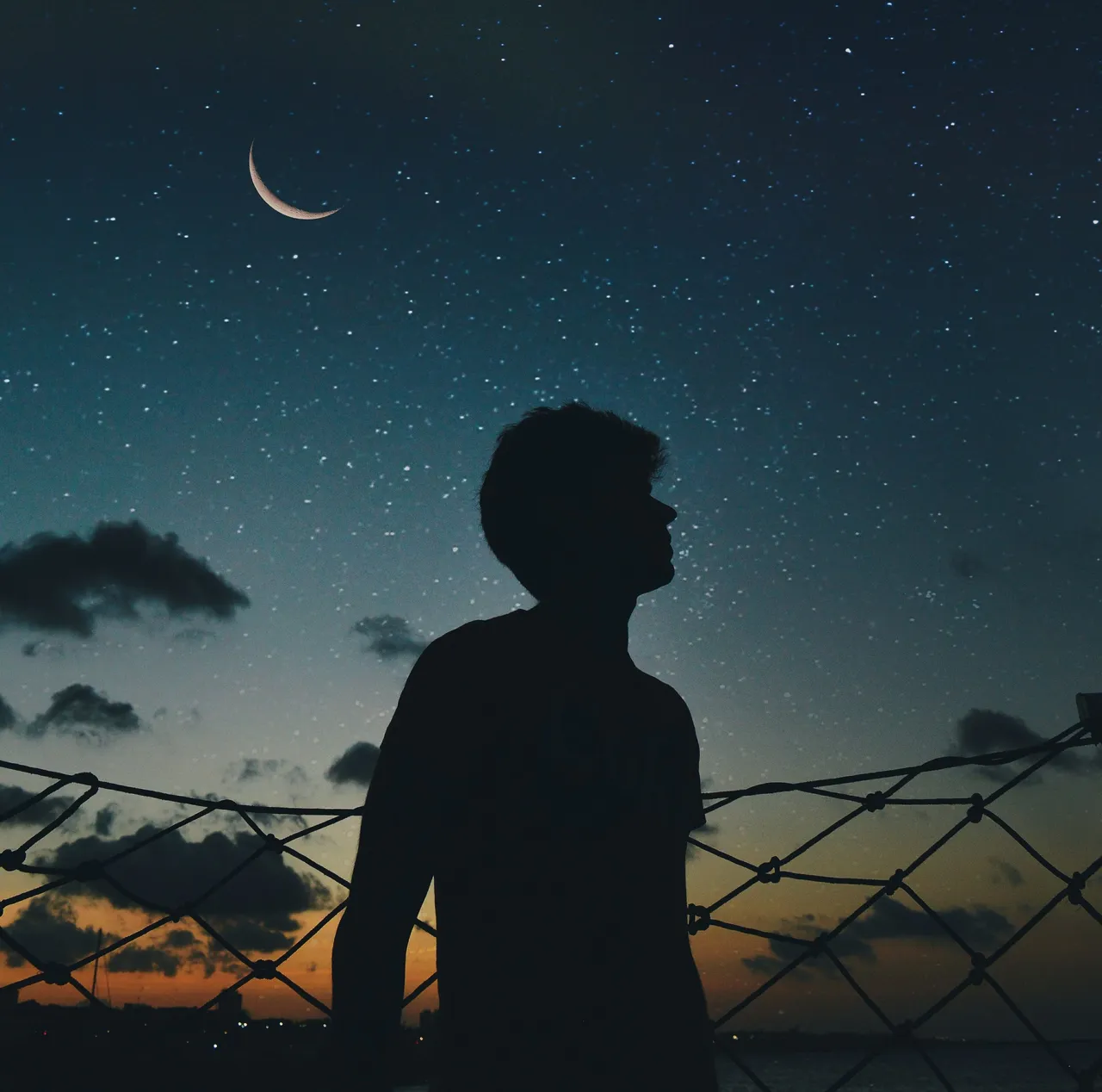 Image by Bruno /Germany from Pixabay
Image by Bruno /Germany from Pixabay
coddled in argent moonbeams -
dreaming of dew melt.

The moon holds such sway over our world, affecting the tides in our oceans and informing the origins of many calendar formulations. In our past the lunar calendars were used to help judge when to plant crops, choose the best hunting times and observe religious holidays. Some religions still use a lunar calendar to measure time.
Islamic calendars, otherwise known as Hijri calendars, are based on the lunar cycle, and its year consists of 12 lunar months. The Hijri calendar plays an important role for religious purposes and the Muslim religious festivals are based on this calendar. A Jewish calendar uses primarily lunar definitions, and each month begins on the new moon, but the years are based on solar years.
Source
The moon also plays a part in traditional Japanese Haiku, and culture, as it is an autumn Kigo.
In Haiku, a Kigo is a focus of reflection for a particular season. Similarly the imagery of dew is an autumn Kigo, and an important metaphor for the fleeting nature of existence in Buddhist traditions.
Hive’s resident haiku expert @dbooster explores these associations in his latest translation of Issa's Haiku Dewdrop World ~ Tragic Haiku of Japan quoted below.
露の世は露の世ながらさりながら 一茶
tsuyu no yo wa tsuyu no yo nagara sari nagara
this life
is as the morning dew
yes... but...
—Issa (trans. David LaSpina)
I think that many cultures have lost a great part of their connection to various aspects of nature and elemental influences on our life. Being observant of things like the heavenly bodies, elements of nature such as wind, rain and the way they interact with plants is a powerful form of meditation. A way to disconnect with the realms of thought within and find stillness in the world without.

Photo by brenoanp from Pexels
For some strange reason I have always been drawn to observing the moon in autumn, and to a lesser extent in winter. At these times of the year I get inexplicable urges to go on night-time wanders when my eyes are naturally drawn to the moon and stars. I always assumed this was because the sky is usually clearer in late autumn and winter in my part of the world.
I went on one of these walks last night down to the river Mersey and watched the moon waning crescent in the sky, scything through stars in heaven's field it seemed somehow fitting for autumn time, the traditional final harvest before winter.
I wrote a haiku while leaning on the balustrade at the river's edge last night, and today drew on the memories of the crescent moon sailing across the night sky for the tone of this Haiku.
The basic definition of Haiku is a Japanese short poem based on a nature theme. Haiku often have three lines consisting of the following number of syllables per line-- five, then seven, then five. But, the syllable count is of secondary importance to effectively and simply expressing the imagery in the poem.
True haiku should contain one or two images that have a simplicity and clarity that become transcendent. The analogy has been posited of Haiku as the artistic equivalent of the practice of Zen Buddhism. By reflecting a simple moment of perfection, one finds the universal moment.
The haiku in this post attempts to capture what Japanese Haiku masters call Kigo (季語):
an explicit or implicit reference to a season, that defines the time of the year in which the haiku is composed or referred to.
Wabi (侘寂)
the taste for frugal and natural things, rustic simplicity, freshness or silence; it can be applied to both natural and artificial objects, or even non-ostentatious elegance.
And Yūgen (幽玄):
a sense of wonder and mystery representing the state of mind produced by the inexplicable fascination of things, the feeling of an 'other' universe, full of mysterious unity.
To read more about the aesthetics of true haiku, and the difference between haiku and senryu, please check out my post: Haiku Vs Senryu - The Aesthetics of Form
All images in this post are creative commons licence or my own property. If you have enjoyed this Haiku, please check out my homepage @raj808 for similar content. Thank you.


 Click banner to visit the community page
Click banner to visit the community page
 Find us on twitter by clicking the banner above.
Find us on twitter by clicking the banner above.
Interested in trading, buying or selling crypto?
Sign up to Bittrex here.
Sign up to Coinbase here.
Sign up to Swissborg app to instantly buy crypto here.
Use my referral link to sign up for Crypto.com and we both get $25 USD.
If You Have Found Value From this Post and Want to tip extra, Crypto Donations Are Welcomed:
►Donate Ether and ERC20 Tokens: 0x32321615174AF3Da6074Cf79DED8269cA7a8eB24
►Donate Bitcoin: bc1q8wutj8u6ush7s8mucphfxf7gzrexeywmuqm8g3
►Donate Bitcoin Cash: qzt7c0czw0q988h93jvcz2rq5gy0s3h9pg2pk700ev
►Donate Litecoin: Lfsnz3pbT5V9N6WWGRaBsgKs9EvFeqzcPm
►Donate BNB: bnb1xeu94exteel9w3g8g44e6g595kvrqlgzm0crq4
►Donate Monero: 49PovXGcM9Y7JYeRJ35W9xZGrdivvLaMbVtGc3WDv6amCm5wqA854SvJNWxaEqjTz18K5YVPj5D6619C3bvNHsrG7oD1whb
►Donate Tezos: tz1SJUkpeznKE6bEhbX81YFdUQS5BprA4ot8
►Donate XRP: r35quYTThThN7yNvkJxyhLFAPyju3tsT35